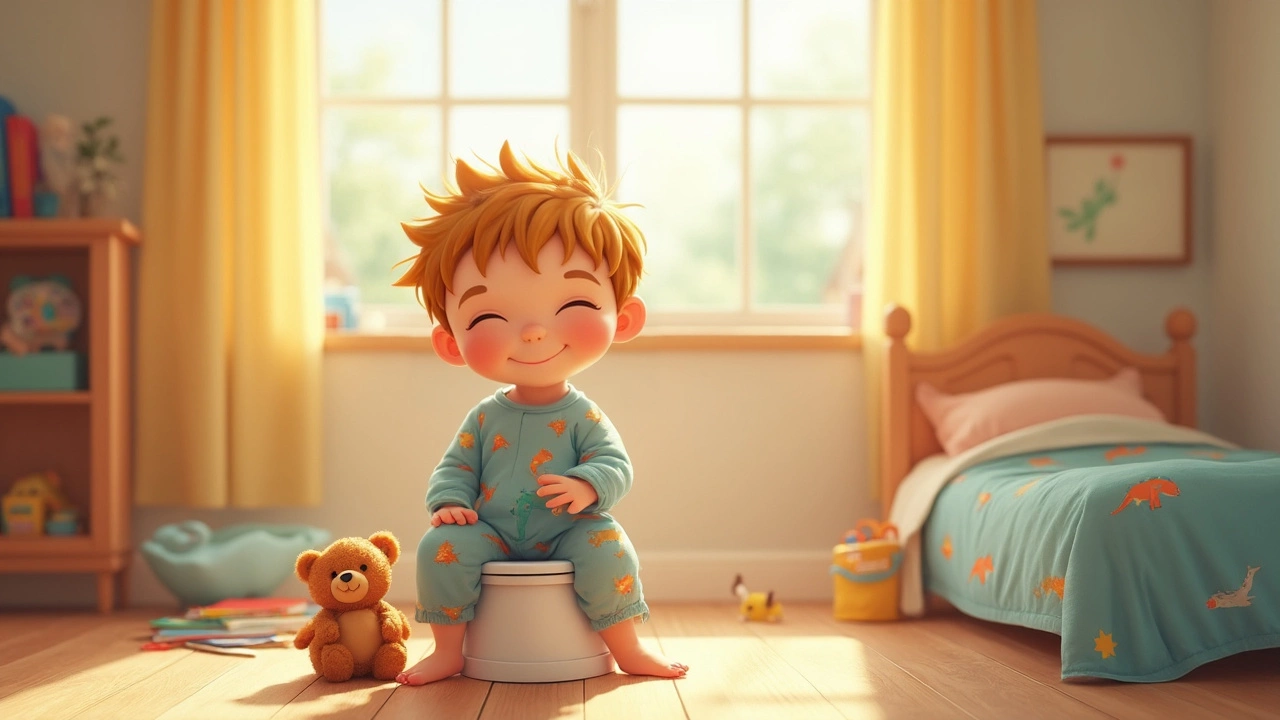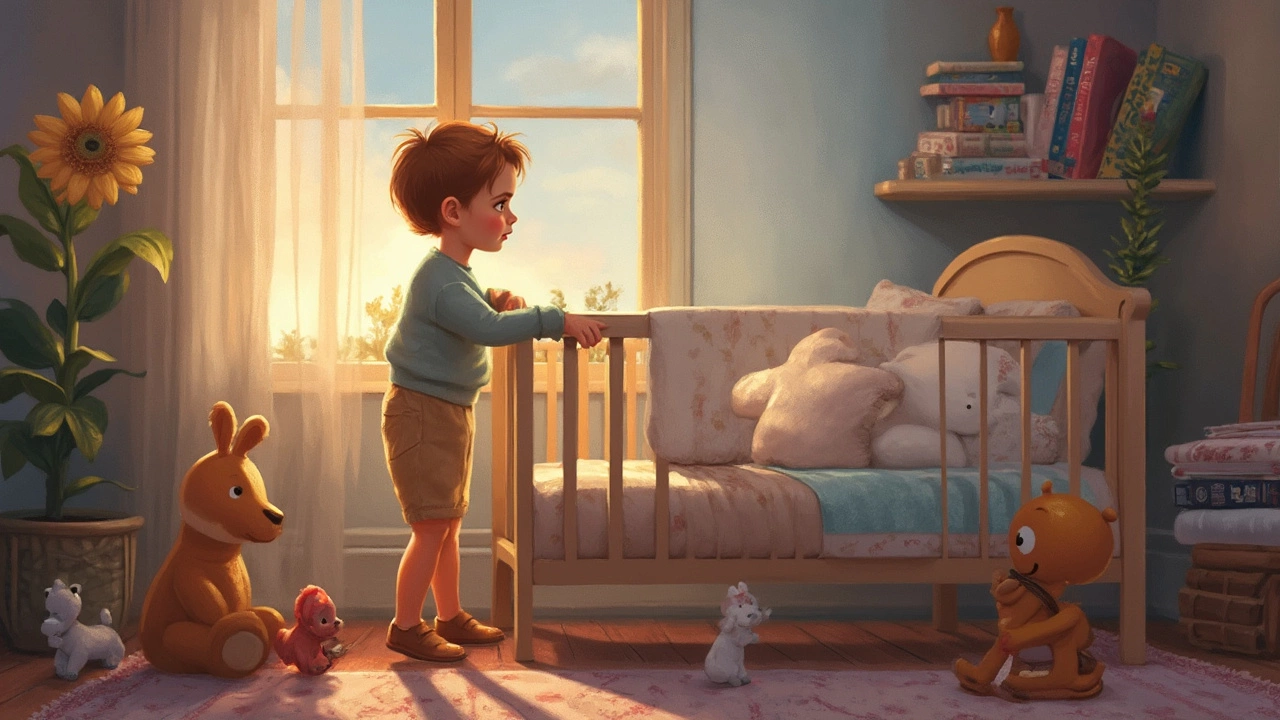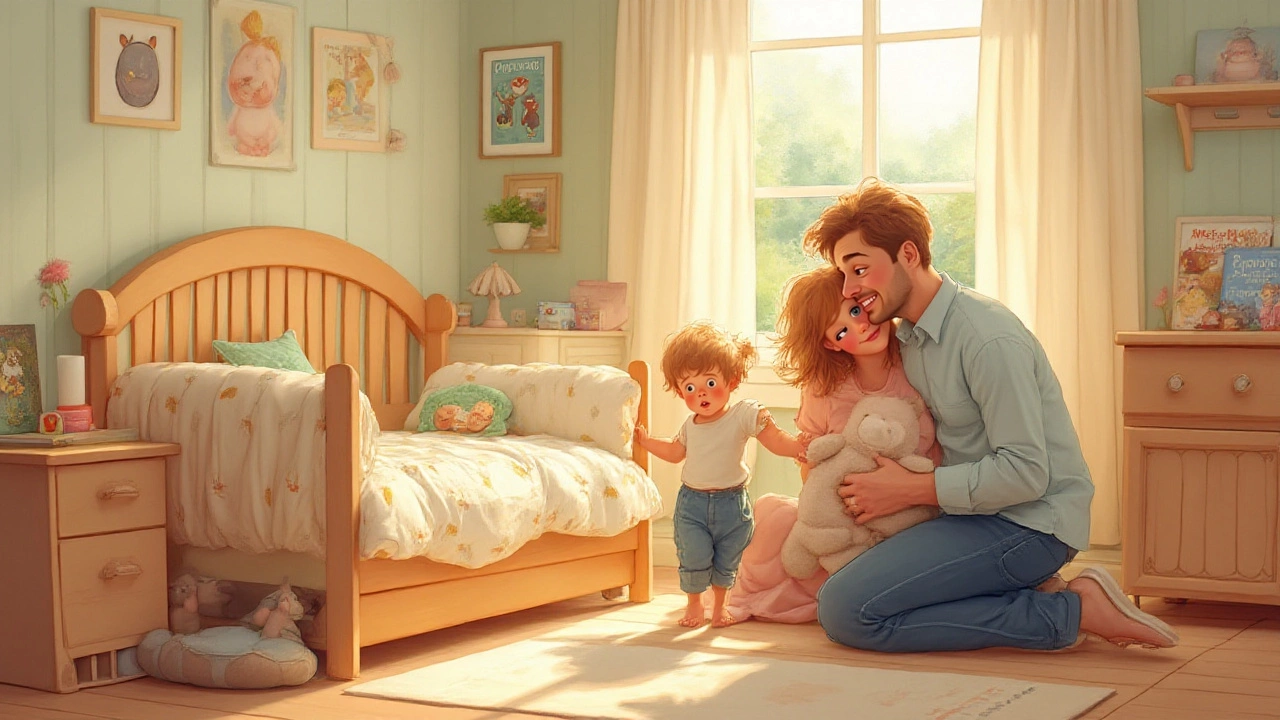Toddler Pillows: When Is the Right Time to Introduce One?
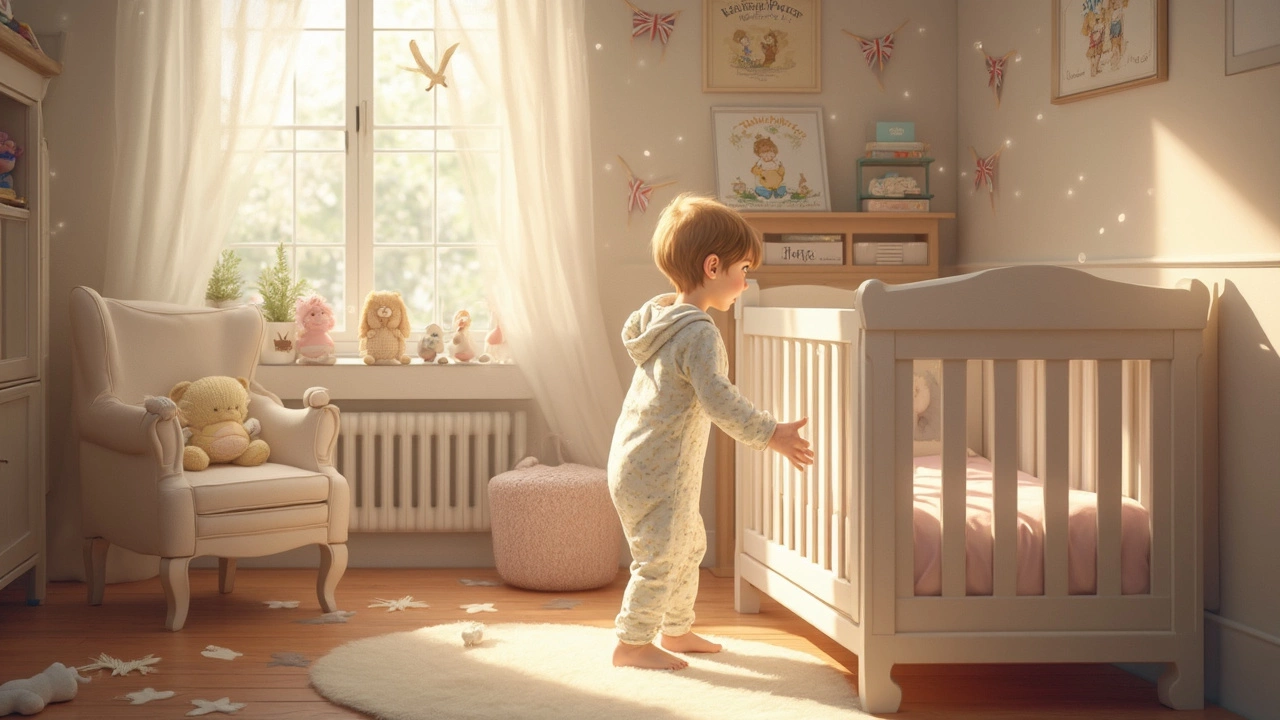
If your toddler keeps grabbing your pillow or rolling around looking for something to snuggle under their head, you might be wondering—is it finally time for them to have their own?
Pediatricians usually say not to give a pillow to a child under age 2. Before that, pillows and other soft bedding can actually raise the risk of suffocation or SIDS. It sounds scary, but it’s an important rule for keeping your little one safe through those wiggly nights. Once your child hits that second birthday or starts climbing out of the crib, it’s worth checking for the signs they’re ready.
Not every toddler will suddenly need a pillow at age 2, though. Plenty of kids happily sleep flat for months longer—no complaints, no neck pain, just cozy dreams. Others start putting stuffed animals or blankets under their heads, which is your cue they might want a little support. The big thing is to watch your child’s comfort and listen to their cues, not rush just because an age milestone says so.
- Recommended Age for Toddler Pillows
- Why Timing Matters for Pillow Introduction
- Signs Your Toddler May Be Ready
- Choosing the Right Toddler Pillow
- Risks and Safety Concerns
- Tips for a Smooth Transition
Recommended Age for Toddler Pillows
The most common advice from pediatricians and sleep experts? Hold off on giving your child a toddler pillow until they're at least two years old. The American Academy of Pediatrics (AAP) is pretty clear: babies and younger toddlers should sleep flat, without a pillow or extra bedding, to keep sleep safe and reduce the risk of suffocation or sudden infant death syndrome (SIDS).
Most kids transition to a toddler bed somewhere between ages 18 months and 3 years. Just because your child has moved into a new bed doesn’t mean they need a pillow on day one. There’s no exact "magic" age—lots of kids don't show interest right at their second birthday. Instead, the main goal is to wait until your toddler can roll over, move freely, and get in and out of bed by themselves.
Here’s a simple rundown of what research and expert groups say:
- Under 1 year: Absolutely no pillows—way too risky.
- 12-24 months: Still safer to go pillow-free, even for restless sleepers.
- Age 2 and up: You can start thinking about introducing a pillow for toddlers, especially if your child seems uncomfortable or starts asking.
If you’re a numbers person, this table shows what major groups say about starting with a toddler pillow:
| Organization | Recommended Minimum Age |
|---|---|
| American Academy of Pediatrics (AAP) | 2 years |
| Centers for Disease Control and Prevention (CDC) | 2 years |
| Safe Sleep for Babies Campaign | 2 years |
The bottom line: being patient with toddler sleep and waiting at least until age 2 is the safest bet. If you’re unsure, chat with your pediatrician—they'll help match your child’s specific needs to the safest sleep setup.
Why Timing Matters for Pillow Introduction
Getting the timing right for a toddler pillow makes a real difference for both sleep quality and safety. If you offer a pillow too soon, babies and young toddlers have a higher risk of suffocation because they’re still learning to move their heads freely while sleeping. That’s why doctors and the American Academy of Pediatrics agree: wait until at least age 2, or even later if your child’s happy sleeping flat.
Toddlers don’t need a pillow from day one. Their bodies are built differently from adults—their heads are proportionally larger compared to their shoulders, so lying flat is actually more comfortable and better for their growing bones and neck muscles. A toddler bed doesn’t automatically mean pillow time.
If you rush into giving a pillow, you could create sleep problems. Some toddlers toss and turn more with a pillow, get trapped under it, or wake up with a stiff neck if the pillow doesn’t fit right. Giving them a pillow only when they show signs of needing one—like putting toys under their heads, or telling you their head hurts—means less fuss and safer sleep.
Here’s a look at the main reasons timing matters:
- Toddler safety: Waiting reduces the risk of suffocation and SIDS, which are highest in kids under two.
- Toddler sleep quality: Introducing a pillow at the right time helps your child get comfortable, instead of making them feel awkward or overheated.
- Pillow size and firmness: Toddlers need smaller, flatter, firmer pillows, not the fluffy grown-up kind. Giving them one too soon is just asking for trouble.
Did you know that according to a CDC report from 2023, 83% of sleep-related infant deaths involved soft bedding or objects? That’s why experts stress patience over tradition or comfort habits passed down from older siblings or grandparents. When in doubt, hold off a little longer. Your child’s safety comes first every time.
Signs Your Toddler May Be Ready
So how do you know when your toddler’s finally ready for a toddler pillow? It’s not just about hitting a certain birthday. Instead, watch for very clear signals during bedtime, naps, or just the way they act in their toddler bed.
- Head Resting Habits: If your child starts bunching up blankets, stuffed toys, or even your arm under their head, it’s usually a sign they’re looking for some extra support.
- Frequent Position Flipping: Some toddlers get fussy or flop around trying to get comfortable. They might tuck their hands behind their head or seem restless more than usual.
- Crib-to-Bed Transition: If your child moves to a toddler bed, it’s easier and safer to add new bedding like a pillow, since the suffocation risk drops after age 2 in a bed versus a crib.
- Complaints About Neck Pain: This isn’t always obvious, but your child might start pointing to their neck or saying “ow” after sleep, especially if they’re talking more. Don’t brush it off!
- Sleeping at Daycare or Grandma’s: Some toddlers try a pillow during naps away from home and come back asking for one at night.
It’s rare, but kids develop at their own pace. By age 2 to 3, a lot of parents notice these signs, but some kids don’t care about a pillow until closer to age 4! Pay attention to what’s going on in your own home, not what everyone else is doing.
| Typical Age to Start Using Toddler Pillows | Percentage of Parents |
|---|---|
| Before 2 years | 10% |
| 2-3 years | 60% |
| 3-4 years | 25% |
| After 4 years | 5% |
One last thing: don’t rely on habits alone. Double-check for safe sleep practices and talk to your pediatrician if you’re unsure about adding anything new to their bed. Kids will let you know what’s working (or not) if you pay attention!
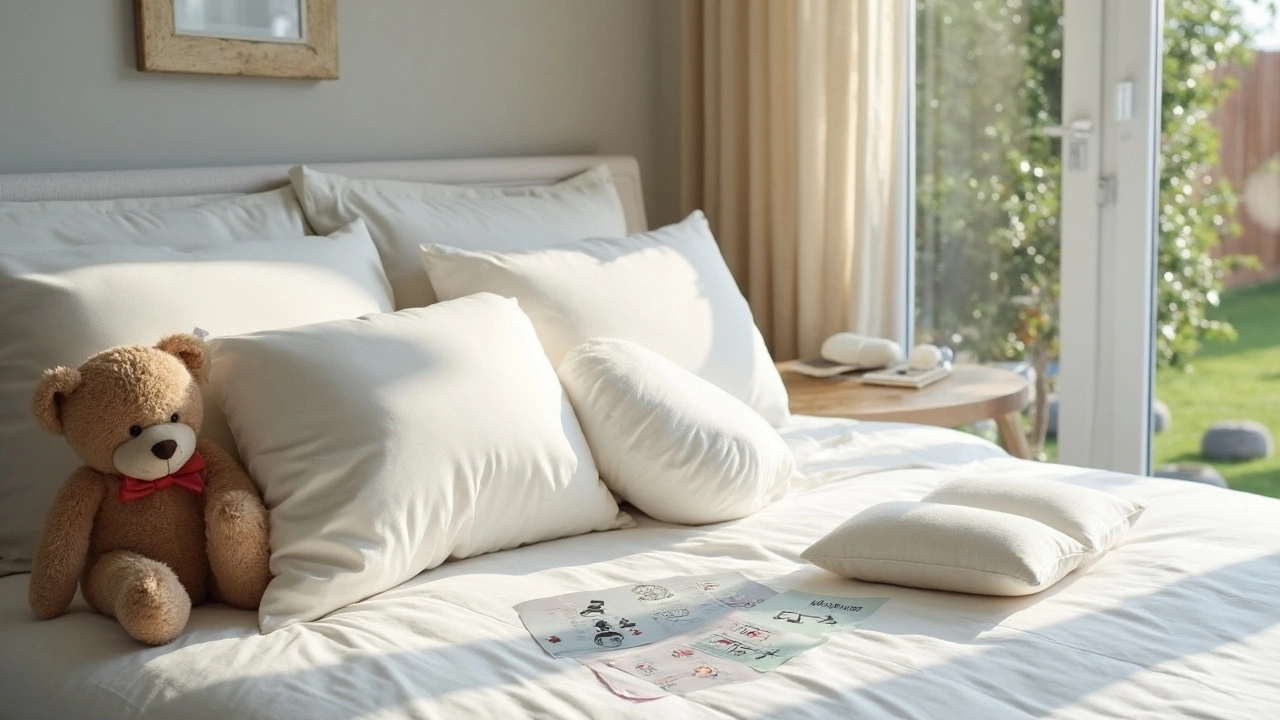
Choosing the Right Toddler Pillow
Walking down the bedding aisle can be overwhelming because not all pillows are made for toddlers. The first thing you want is a toddler pillow—not a regular adult pillow. Size matters a lot here. Look for a pillow that’s about 13 by 18 inches. Anything bigger pushes their head into weird angles and can mess with neck alignment.
Keep it simple with the fill. Super soft, squishy pillows are fine for grown-ups but not safe for little kids. Pediatricians recommend a pillow that's firm and holds its shape. Foam pillows aren’t usually a good fit—stick with low-loft, hypoallergenic polyester fill or organic cotton. And double-check the label for anything labeled “hypoallergenic,” especially if your child has allergies.
Machine-washable cases and pillows are a lifesaver. Kids drool, snack, and sometimes have accidents in bed. Always check if both the pillow and cover are washable (not just spot clean). That keeps things fresh and helps out if your toddler has any allergy problems.
- Choose a pillow that’s designed for toddlers, never adult-sized.
- Look for pillows labeled as hypoallergenic to prevent sneezing fits or skin irritation.
- Firmness is crucial – avoid memory foam or feather fillings; low-loft polyester or organic cotton works well.
- Go with machine washable to handle spills, sweat, and drool easily.
Pay attention to chemical treatments or weird smells. If a new toddler pillow gives off a strong odor, let it air out. Brands boasting about “chemical-free” or “organic” materials often make cleaning easier and reduce allergy risks.
| Feature | Toddler Pillow Recommendation |
|---|---|
| Average Size | 13 x 18 inches |
| Firmness | Firm, keeps its shape |
| Allergy Safety | Hypoallergenic materials |
| Washability | Machine washable |
If you see stitching coming undone or the pillow looks lumpy after a wash, replace it. Lumps and loose fluff aren’t comfortable and could be a safety risk if the filling leaks. And if you’re stuck between different options, go for the one with the most parent reviews and photos. Real-life toddler battles are the best test around!
Risks and Safety Concerns
Adding a toddler pillow might sound simple, but safety has to come first. The main worry is suffocation—toddlers under two just aren’t strong enough to move or push away soft bedding if it covers their face. That’s why almost every pediatric group, including the American Academy of Pediatrics, says to avoid any pillow for kids younger than age two.
It’s not just about age, though. The wrong kind of pillow can also up the risk. Big, fluffy adult pillows can block breathing, so only go for pillows designed for toddlers. These are flatter, firmer, and smaller on purpose.
Here are some quick things to keep in mind for pillow safety:
- Make sure the pillow can’t easily squish flat or form a pocket around your child’s face.
- Skip any pillow with loose filling or pieces that could become a choking hazard.
- Avoid heavy decorations, zippers, or tags that can come loose.
- Don’t use pillows as barriers along crib or bed rails—they’re not the same as bumpers and won’t keep a curious toddler from tumbling out.
Overheating is another thing a lot of parents miss. Bulky pillows can trap heat and make sleep uncomfortable, especially if your toddler’s a sweaty sleeper. Stick with breathable fabrics and lighter, hypoallergenic fillings to keep things cool and reduce allergy flare-ups.
| Risk | Common Cause | Tip for Prevention |
|---|---|---|
| Suffocation | Pillows too big or fluffy | Buy toddler-sized, firm pillows |
| Choking | Loose fillings, zippers | Avoid decorated or adult pillows |
| Allergies | Feather or down filling | Choose hypoallergenic pillows |
| Overheating | Thick materials | Pick breathable, light fabrics |
If your child ever starts chewing or tearing at the pillow, or if you notice any redness on their face or neck after sleep, pull the pillow out and try again later. Safety first—there’s no rush.
Tips for a Smooth Transition
Switching to a toddler pillow isn’t usually a dramatic moment, but a few practical tips can make it a whole lot easier for everyone—especially if your child has been happily sleeping on a flat mattress until now.
- Introduce the pillow slowly. Put the pillow in their toddler bed at nap time first, so it’s not overwhelming at night. Naps are a low-pressure way for your kid to test things out before bedtime routines kick in.
- Let your toddler help pick out the pillow. If they pick the color or design, there’s a good chance they’ll be excited to use it. Just make sure it fits the safety guidelines for size and firmness.
- Stay consistent. Use the pillow every night once you introduce it. Bouncing back and forth between using it and not can make it harder for your toddler to get used to this new thing in their bed.
- Watch for allergies. Some toddler pillows use materials like feathers, which can be a problem for sensitive little noses. Hypoallergenic pillows made from cotton or synthetic fill are the safer bet for young kids.
- Keep it simple. Skip extra covers, toys, or stuffed animals right away. Clutter in the bed can make the change confusing or less safe.
- Check on your child often at first. It’s normal for toddlers to wiggle off the pillow or even push it away while they adjust. That’s totally fine—just give them time to get used to it, and don’t force it if they’re not interested.
If you’re curious about what most parents actually try, check out this quick look at common toddler pillow materials and their popularity:
| Pillow Material | % of Parents Who Chose It |
|---|---|
| Hypoallergenic Synthetic Fill | 52% |
| Organic Cotton | 32% |
| Feather/Down | 10% |
| Memory Foam | 6% |
Remember, sticking to a toddler pillow designed for little heads is key. You’ll avoid safety headaches and set up the coziest upgrade to your bedtime routine. Most kids adjust within a couple weeks, so keep things calm and routine-focused while they figure it out.
